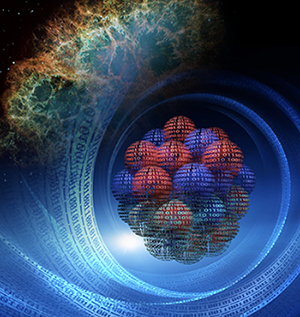Nuclear Forces for Precision Nuclear Physics

A sound theoretical description of nuclear forces is pivotal for understanding many important physical observables over a wide range of energy scales and densities, from few-body physics to nuclear-structure observables to astrophysical phenomena. A systematic and precise theory for nuclear Hamiltonians is crucial to providing accurate predictions for these systems with controlled theoretical uncertainties, and to enable meaningful comparisons of theoretical calculations with experimental data and astrophysical observations. Within the last two decades, significant progress in nuclear physics has been made possible, in part, due to the theoretical and algorithmic development of powerful ab initio many-body methods and their combination with modern interactions from effective field theory (EFT). With growing computational power and continuous development of such methods, increasingly larger parts of the nuclear chart are accessible to ab initio calculations. The tremendous methodical progress in recent decades means that uncertainties from the nuclear Hamiltonians have become increasingly important to quantify since they dominate over uncertainties arising from the many-body methods. There are several open questions and shortcomings of modern nuclear Hamiltonians which can lead to sizable uncertainties for nuclear observables of interest for next-generation experiments and astrophysical observations, e.g., what is the correct power counting, what is the best strategy to infer the most probable values of low-energy constants in chiral EFT from data, what is the practical role of the regularization scheme, can lattice quantum chromodynamics (QCD) studies of few-nucleon systems accurately constrain the EFTs, etc.
Goals of the program
The aim of the program is to bring together researchers with relevant expertise in EFT, nuclear many-body calculations, and lattice QCD calculations for nuclear physics, with the ultimate goal of identifying future pathways to solve shortcomings of state-of-the-art nuclear Hamiltonians and to improve our understanding of nuclear interactions.
Currently, the systematic uncertainties of the nuclear Hamiltonian pose a major limitation for making accurate predictions for, e.g., neutron matter and saturation properties of nuclear matter, the nuclear symmetry energy and its density dependence, properties of medium- and heavy-mass nuclei, the location of nuclear driplines, currents and reactions, such as those relevant for ab initio nuclear matrix elements needed for neutrinoless double-β decay, neutrino-nucleus scattering, and direct dark matter detections. With the help of this program and its stimulating environment, we hope to generate new ideas and to foster collaboration between experts from the different fields. Such collaboration is important for enabling future high-precision calculations of observables in atomic nuclei and nuclear matter that are relevant in nuclear physics, high-energy physics, and astrophysics.
Organization
The program will take place virtually for three weeks and talks and discussions will be scheduled for three days per week. One or two short talks will be planned each day to introduce the audience to the state-of-the-art in various topics and to highlight the existing issues to be discussed. The talks will be scheduled for the first 45min of the session, and will be followed by a 45min dedicated discussion session to be led by the organizers and/or designated experts. This should provide sufficient time for the participants to continue with informal discussions and collaborations and to think at a deeper level about the issues and ideas presented in the talks. We are currently exploring options to facilitate social interactions and will update the participants once the plans are confirmed.
We plan to address the following five topics:
-
Current limitations of nuclear Hamiltonians
-
Constraining nuclear forces with few- and many-body observables
-
Improving nuclear forces with novel fitting strategies and higher orders in chiral EFT
-
Improved power-counting schemes
-
Constraining nuclear forces from lattice QCD
